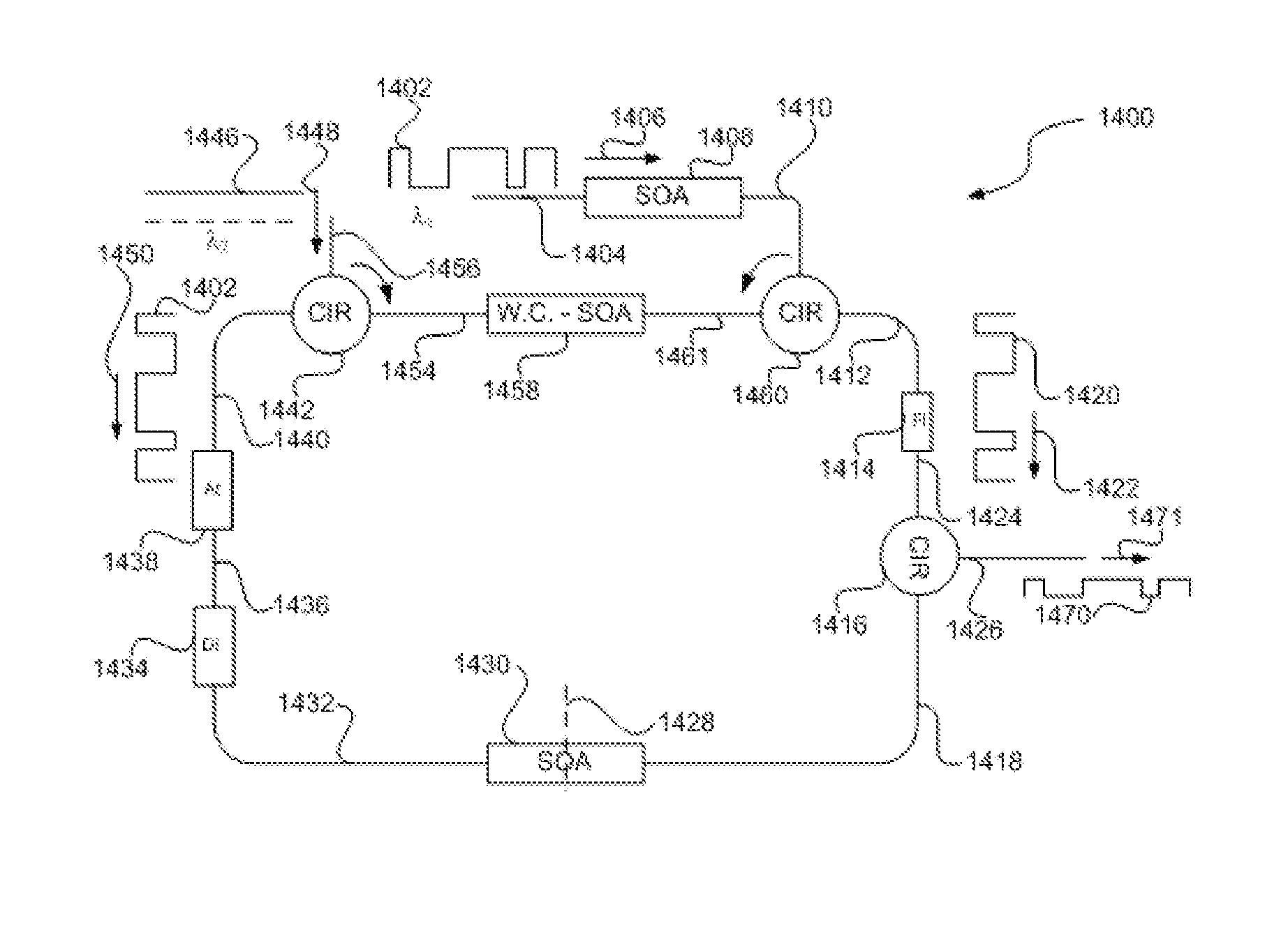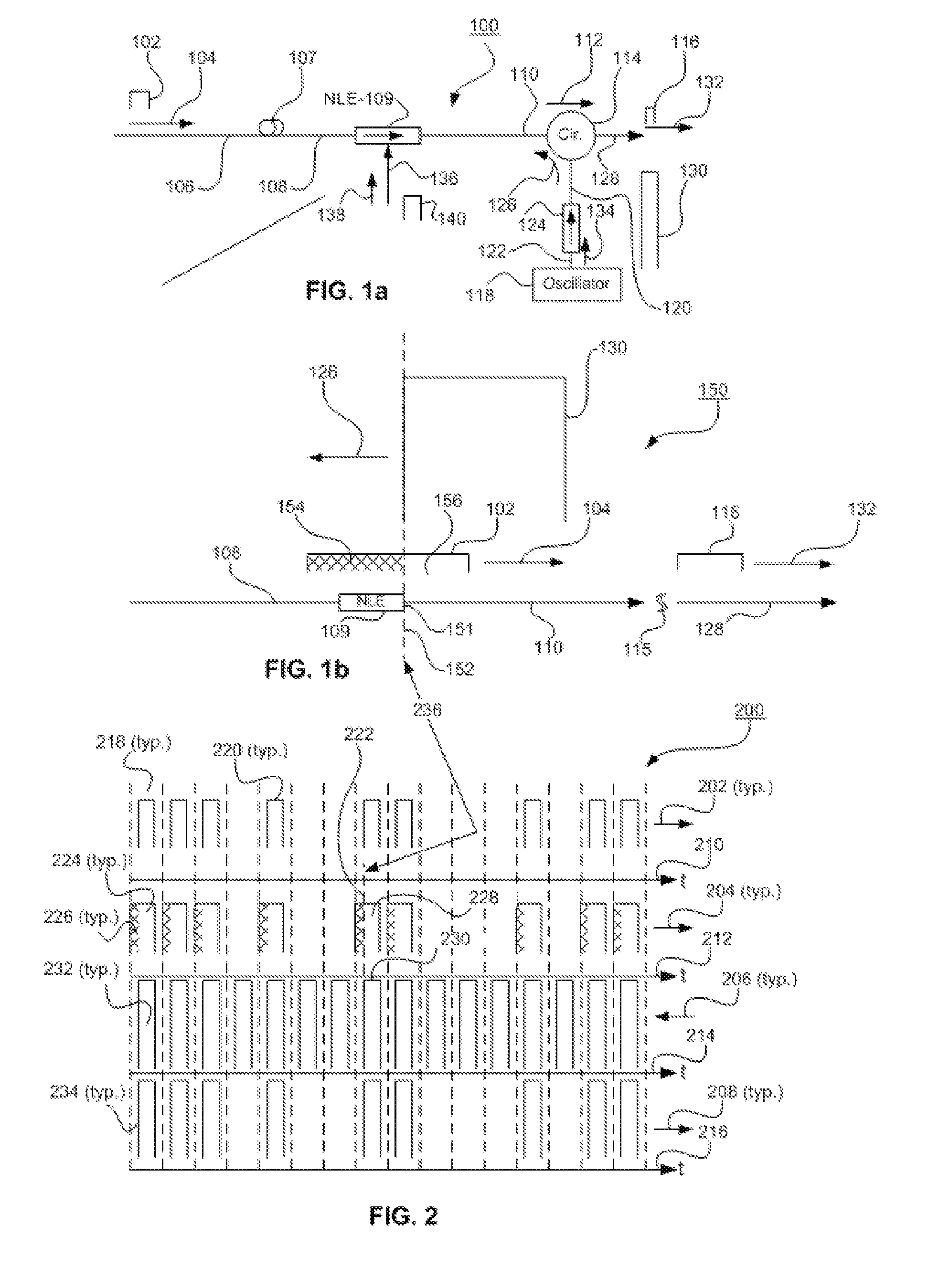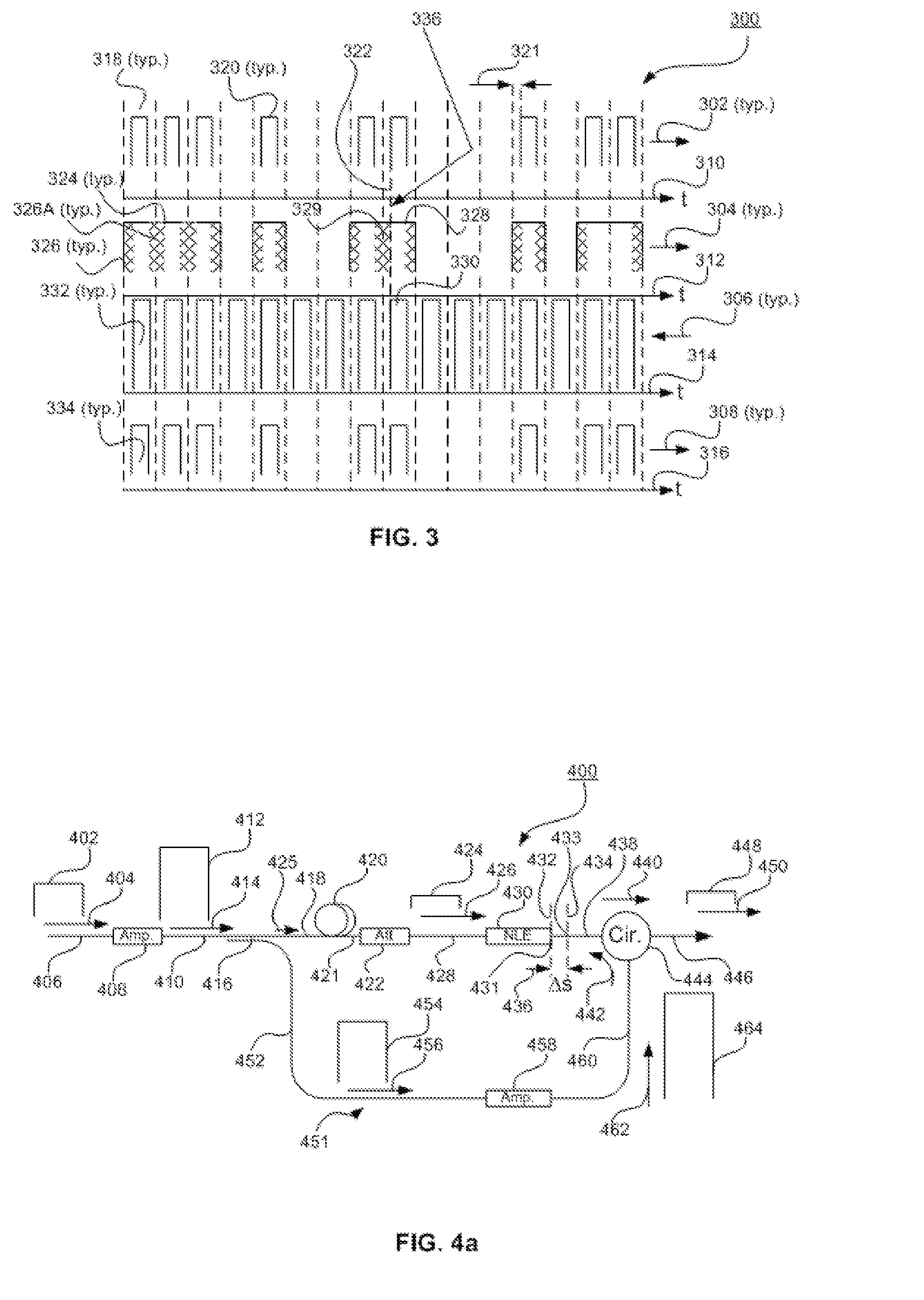Phase wavelength and polarization insensitive optical devices
a polarization insensitive, phase wavelength technology, applied in the direction of optical elements, optical radiation measurement, instruments, etc., can solve the problems of cumbersome devices that require external controllers, sensitive to polarization drift, cumbersome devices, etc., and achieve the effect of reducing the number of devices, and improving the accuracy of measurement results
- Summary
- Abstract
- Description
- Claims
- Application Information
AI Technical Summary
Benefits of technology
Problems solved by technology
Method used
Image
Examples
embodiment 600
[0130] An alternative design for a wavelength converter is illustrated by embodiment 600 of FIG. 6. As is explained below, device 600 may also be used as an optical threshold device. A CW beam 602 is injected at input port 610 of wavelength converter as signal 608, having intensity level 604 shown with reference to zero level 606. Signal 608 propagates through NLE 612 and emerges at radiation guide 614. Information port 678 may include optical amplifier 677 to boost the intensity of information signal 676 received at port 678. Information signal 676 is schematically illustrated as signal 670 having pulses 672 and 674. Signal 676 may pass through optional amplifier 677 and is directed by optical circulator 636, as control signal 618, into guide 614, towards NLE 612.
[0131] In the absence of control signal 618 corresponding to information signal 676, signal 608 may pass, as signal 616, through circulator 636 to appear as signal 621 propagating in light guide 638. Control signal 618 has...
embodiment 700
[0155] An alternative design for an optical chopper is illustrated by embodiment 700 of FIG. 7a. Input information signal 704, which may be a pulse 702, propagates at input port 706 and is amplified by optional optical amplifier 708 to emerge at light guide 710. Optional amplifier 708 is used to boost the intensity of signal 704 whenever needed to ensure that control signals 776 and 766, corresponding to input signal 704, will be able to drive NLEs 746 and 734 into saturation states. Signal 704 continuously propagates from guide 710 into splitting mechanism 714, which may include splitter 712. Splitter 712 may be a star splitter or a cascade of splitters or couplers.
[0156] Splitter 712 receives pulse 702 of information signal 704 from guide 710 and splits it into signals 733, 744, and 724, i.e., into pulses 732, 742, and 722 propagating in light guides 716, 720, and 721, respectively. These light guides are the output terminals of splitter 712. Terminals 716 and 720 of splitter 712 ...
PUM
 Login to View More
Login to View More Abstract
Description
Claims
Application Information
 Login to View More
Login to View More - R&D
- Intellectual Property
- Life Sciences
- Materials
- Tech Scout
- Unparalleled Data Quality
- Higher Quality Content
- 60% Fewer Hallucinations
Browse by: Latest US Patents, China's latest patents, Technical Efficacy Thesaurus, Application Domain, Technology Topic, Popular Technical Reports.
© 2025 PatSnap. All rights reserved.Legal|Privacy policy|Modern Slavery Act Transparency Statement|Sitemap|About US| Contact US: help@patsnap.com



